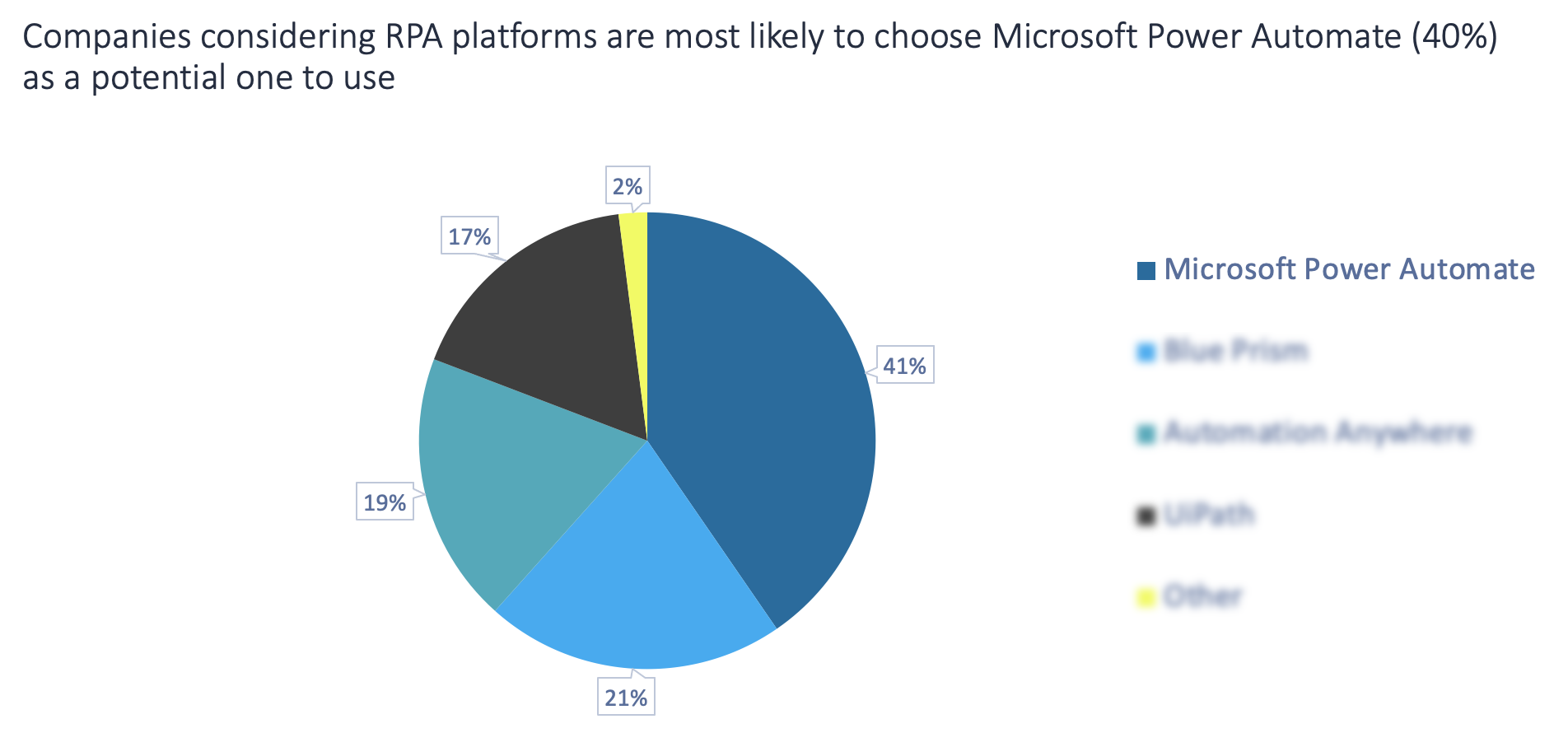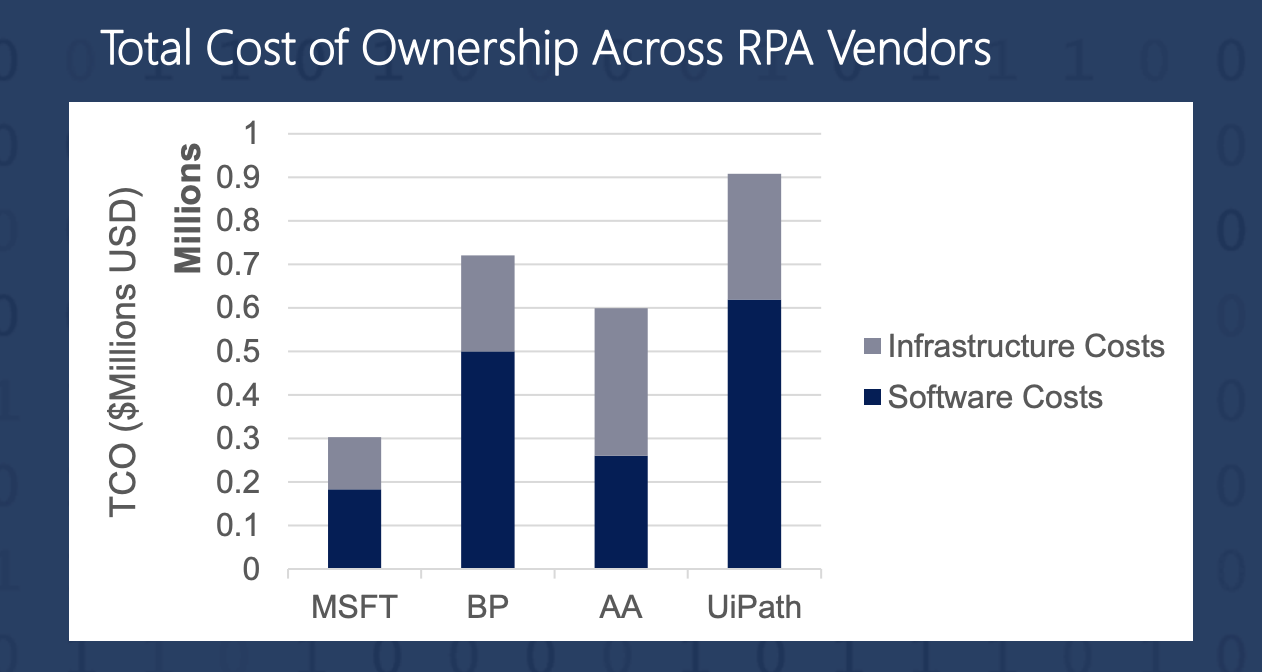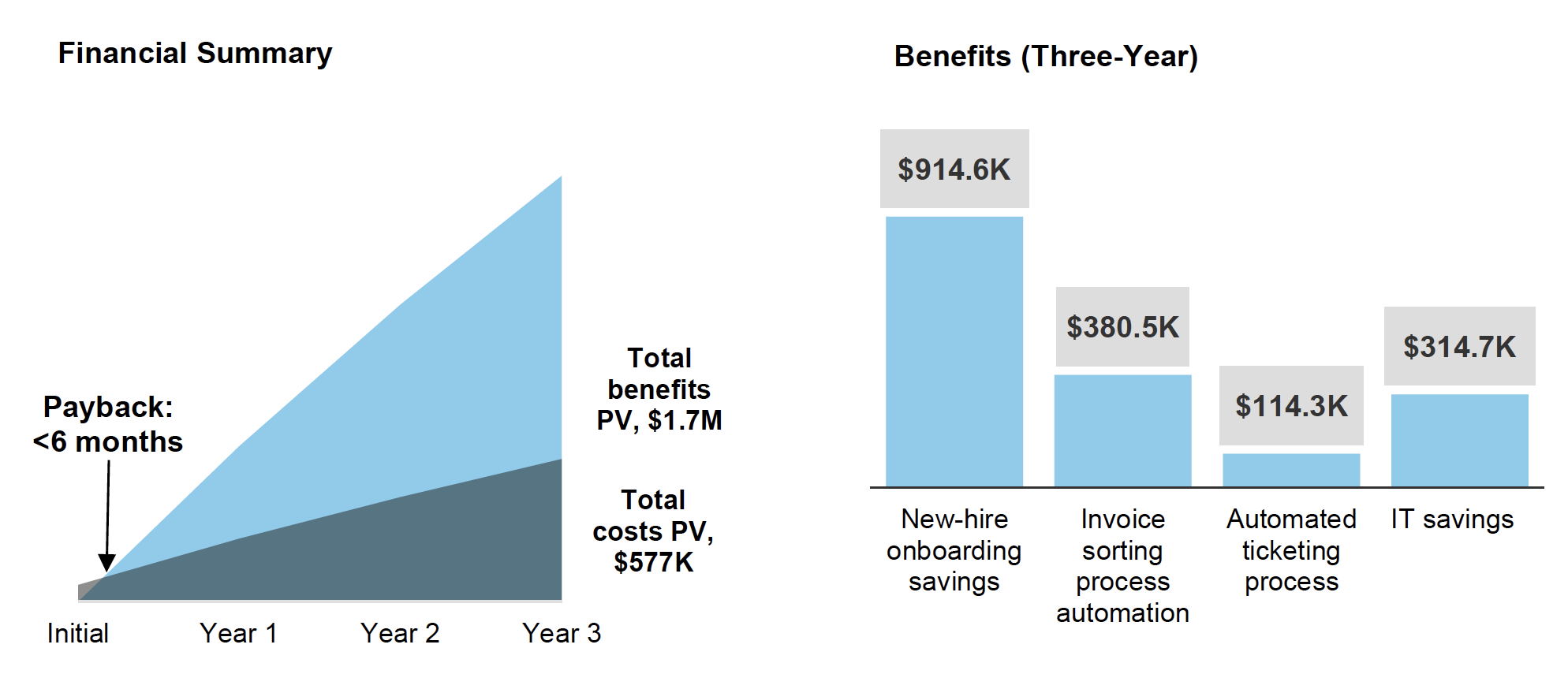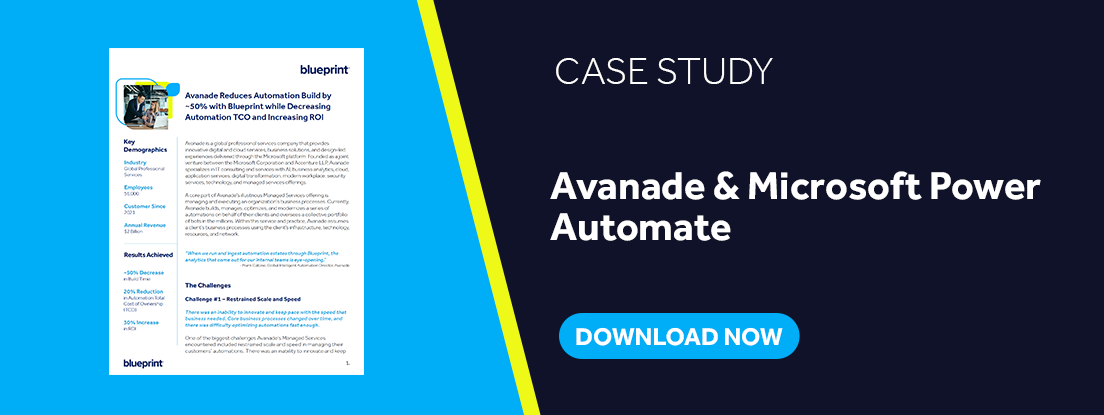5 Ways Microsoft Power Automate Reduces Costs
Even though it’s a relatively new entrant, Microsoft Power Automate has quickly become a leader in the intelligent automation market.
There are clear reasons why so many automation programs are eagerly migrating from their legacy RPA platforms onto Microsoft Power Automate. In a recent research report that Blueprint published on the State of Process Modernization, Microsoft Power Automate was the most likely destination for organizations considering switching RPA tools.

The reasons Microsoft is such an attractive option has been well documented, including in our very own blog here and here. The reduction in automation’s total cost of ownership is one of the primary reasons companies are looking to move their automation estates onto the Power Platform.
This article provides an overview of how Microsoft Power Automate reduces the costs of automation to deliver higher returns and boost ROI.
1 – Microsoft Power Automate reduces RPA software and infrastructure costs
Compared to the other leading RPA platforms, Microsoft offers significantly reduced costs from a licensing and infrastructure standpoint.
According to a recent study completed by Forrester and commissioned by Microsoft, Power Automate is by far the most cost-effective leading RPA solution available on the open market.

In terms of savings from infrastructure, the study concluded that fewer IT resources were needed to manage automation and could effectively support citizen developers to deliver automated processes. Without having to invest in high-cost technical resources to handle complex automation design and delivery, Microsoft customers can scale automation across the enterprise while keeping licensing and utilization costs to a minimum.
2 – Faster deployment of enterprise automations
At a high level, Microsoft Power Automate also accelerates the delivery of enterprise automations. This reduces costs because organizations see a higher return from their investment in full-time employees to design and deliver automated processes.
At its simplest, if an FTE can deliver two automations in the time it takes to complete one in a more technically complex legacy tool, that will positively impact your bottom line. As for real-world examples, in a recent project with Avanade—read the case study here—Avanade disclosed that they were able to optimize automations 30% faster and cut deployment time down by 30% after moving a client’s automation estate onto Microsoft Power Automate from a legacy RPA tool.
3 – Faster time to value
According to Forrester’s report on the economic impact of Microsoft Power Automate, one of their key findings was the accelerated time to value.
With the adoption and implementation of Power Automate, the time to payback was less than six months. Within three years, there was a balance of $1.7 million in benefits versus roughly $600 K in costs across all surveyed organizations, leading to a 199% return on investment in that three-year period.

To put this number in context against other RPA providers, statistics show that Microsoft offers a 25% faster time to value than competitors.
4 – Fewer errors
The increased automation Microsoft provides has also enabled organizations to contribute to their higher-level business objectives in the form of cost reduction. The scale that Power Automate has brought forward has led to a significant reduction in manual errors that previously inflated costs across the enterprise.
5 – Compatibility and familiarity with Microsoft’s suite of products
Power Automate enables citizen development because it shares the same look and feel with the rest of Microsoft’s products that every business user in any enterprise is familiar with. Therefore, while designing and delivering automations may be new, the user interface is not and contributes to a steep and short learning curve.
Additionally, Power Automate fits in seamlessly with the rest of the Microsoft stack, particularly with other Power Platform solutions like Dynamics CRM and Teams. Therefore, organizations can easily build on previous enterprise architecture investments and create even more value delivery.
From a cost reduction standpoint, it’s difficult to argue against the potential benefits that Microsoft Power Automate promises. Yet, the challenge remains how to get your automation estate there without incurring massive costs. Fortunately, Blueprint has developed an RPA migration solution that can move your automation estate onto Microsoft Power Automate with 60-75% time and cost savings while also optimizing your entire estate in the process.
Download the Migrate to Microsoft Power Automate datasheet to learn more and find out how:
Share this
Recent Stories

12 Application Considerations When Migrating RPA Estates to Microsoft Power Automate

Who is Microsoft Power Automate Really For?



